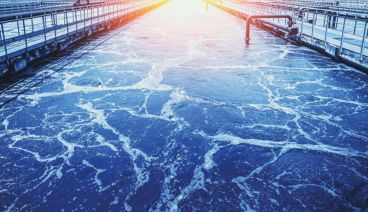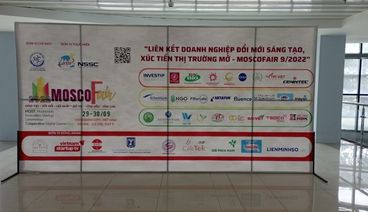MBR WASTEWATER TREATMENT TECHNOLOGY FOR BUILDINGS
Wastewater from buildings and building complexes is a mixed wastewater that contains various discharging sources. The most primary location of buildings and commercial centers are in central with expensive rental cost and saving footprint is the great priority of owners to optimize business area. Therefore, the wastewater treatment system should be designed integratedly and save maximum installation area.
1. Wastewater sources of buildings and building complexes
Wastewater of buildings is normally generated from two main sources:
- Wastewater is generated from residents' daily life. This type of wastewater is polluted by suspended solids (SS), organic substances (BODs, CODs), nutrients (N, P) and pathogenic bacteria (Ecoli).
- Water for service & trade activities: Mainly derived from restaurants, bars, coffee shops…
2. Some difficulties in designing wastewater treatment system for buildings and building complexes
- Treatment of raw waste: Wastewater of building, especially commercial centers, has a greater amount of raw waste than other units, probably generating from daily life activities at different service points or from households due to the lack of uniform regulation of sewage discharge. In many buildings, the water clogs at the first collection location before entering the sewage treatment system. Therefore, the design of the raw waste treatment system needs to be convenient and easily operating, as well as to minimize congestion, especially at peak discharge time.
- Ammonium (NH4) treatment: Ammonia concentration of commercial centers is very high. Many commercial centers today, even equipped with wastewater treatment systems have not treated this indicator or total index N thoroughly.
- Starch: Some commercial centers have pastry shops that produce quite large amounts of starch in the waste water, so if the treatment system is only designed to treat domestic wastewater, it shall fail to treat this starch-based wastewater.
3. Building wastewater treatment by using MBR technology
Advantages of technology provided by NGO
- Footprint saving;
- Water after treatment meets A standard - QCVN 14-2008 for domestic wastewater;
- One-year system warranty;
- Advanced automation, easy operation;
- Provision capacity and 10% additional treatment in case of sudden overload;
- Quick installation;
- Ability to prevent fluctuation level of polluted concentration better than traditional technologies
Technical chart (*)

(*) Reference technical chart, it is adjusted depending on projects’ actual conditions.
Demonstration of building wastewater treatment by MBR technology
Pre-treatment:
- Coarse and fine screening: Pretreatment process is important because it eliminates the coarse solids in order not to clog pumps, and water transmission pipe systems. Grease removal in wastewater guarantees that grease and fat does not interfere the process of useful microorganisms in the treatment plant.
- PH Adjustment in case the volume of toilet waste water is high
- Fat & oil Removal in case there is wastewater souces from kitchen or restaurant
Balancing tank: Regulate the flow rate between different peak discharge hour, and accommodate polluted concentration from different discharge sources.
Specific water treatment tank: If there are some specific discharge sources from bakery, experiment activities, fresh food processing activities, the specific treatment method will be applied separately at each discharge points, or all wastewater will be overall treated at the central treatment system.
Microbiological treatment tank can be designed into one or more compartments.
- Anoxic compartment: Eliminating NO3. Anoxic microorganisms use nitrate (NO-3) instead of oxygen. Therefore, it is necessary to reflux water containing nitrate. To enhance treatment efficiency, the tank is designed to be attached by a submerged mixer.
- Aerobic compartment: This is the central treatment compartment of the system before the effluent is drained out. The high density of micro-organism and their adhesion creating a film on membrane surface will completely remove pollutants such as ammonia NH4, part of BOD part, nitrate
Wastewater of building after treatment meets A/B standard - QCVN 14:2008 for domestic wastewater.
This solution can be applied to treat wastewater for different projects such as apartments, restaurants, hotels



